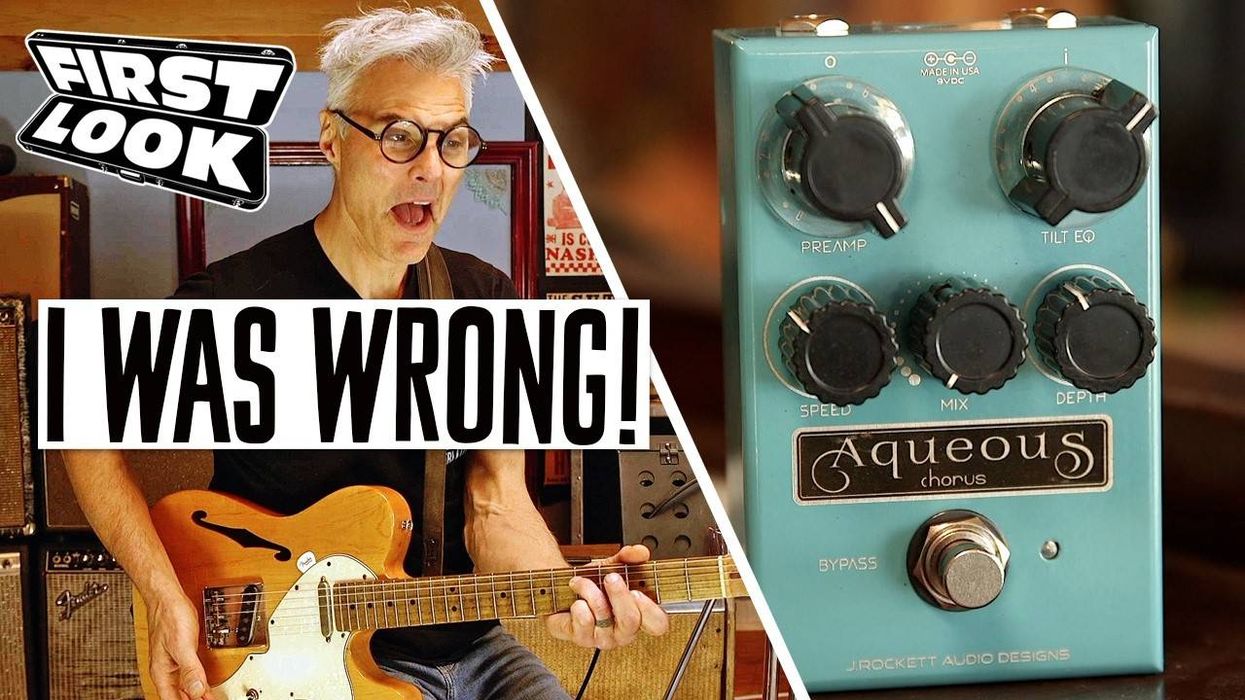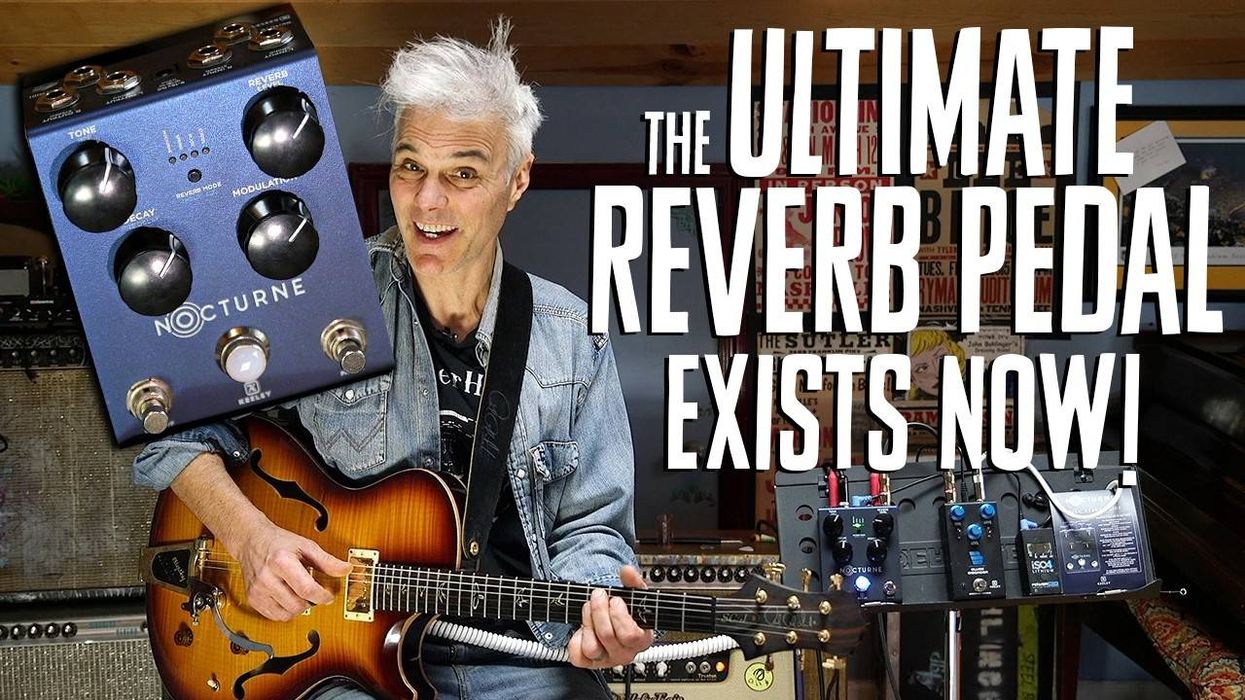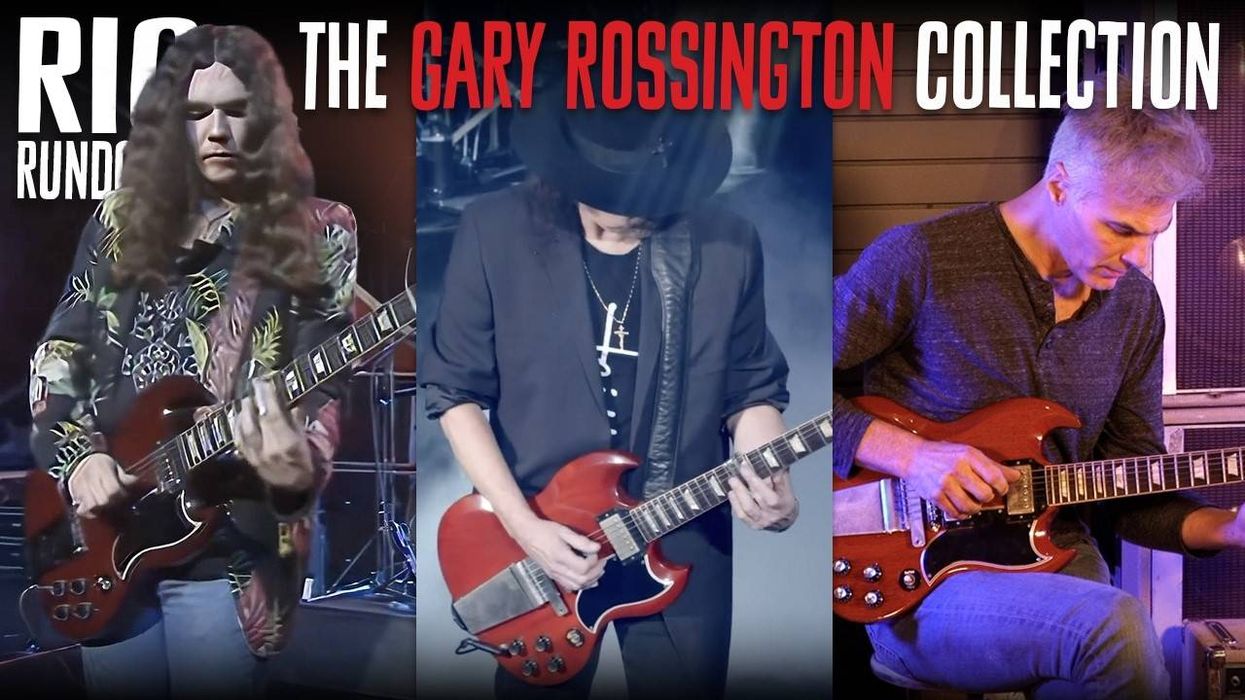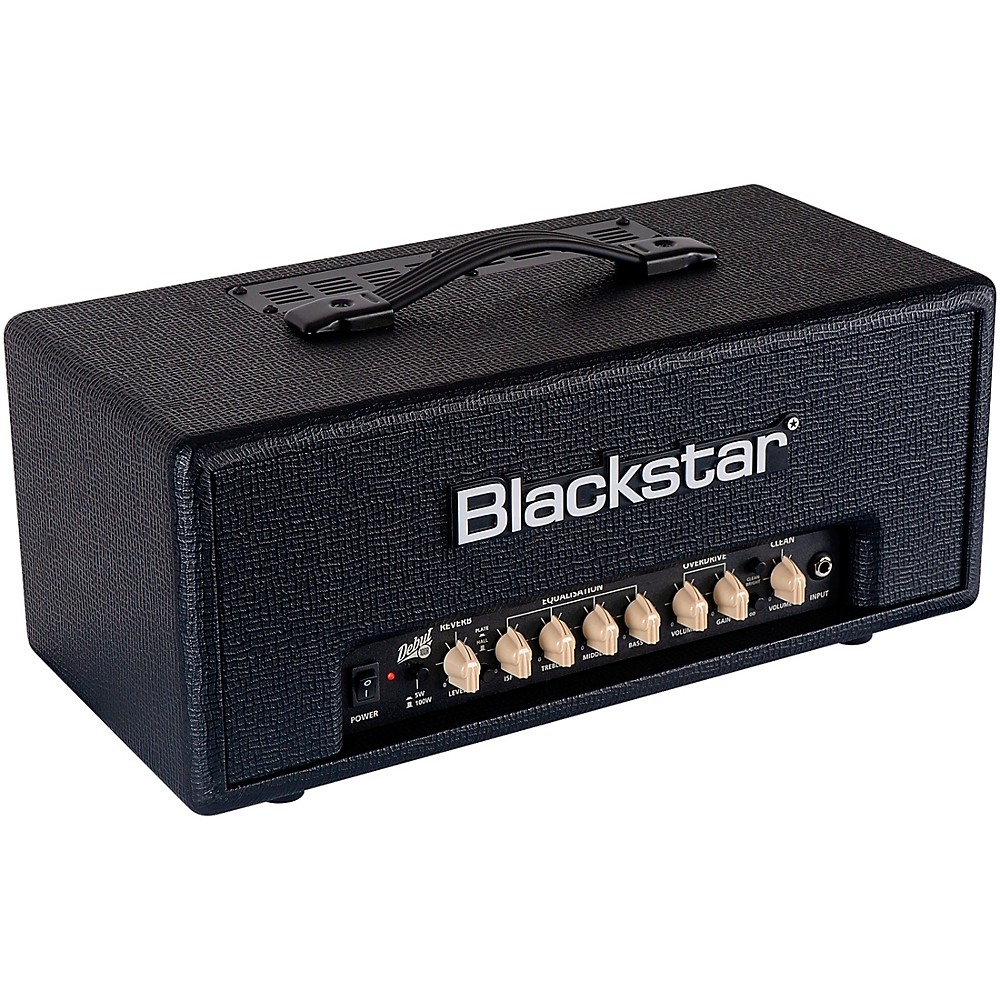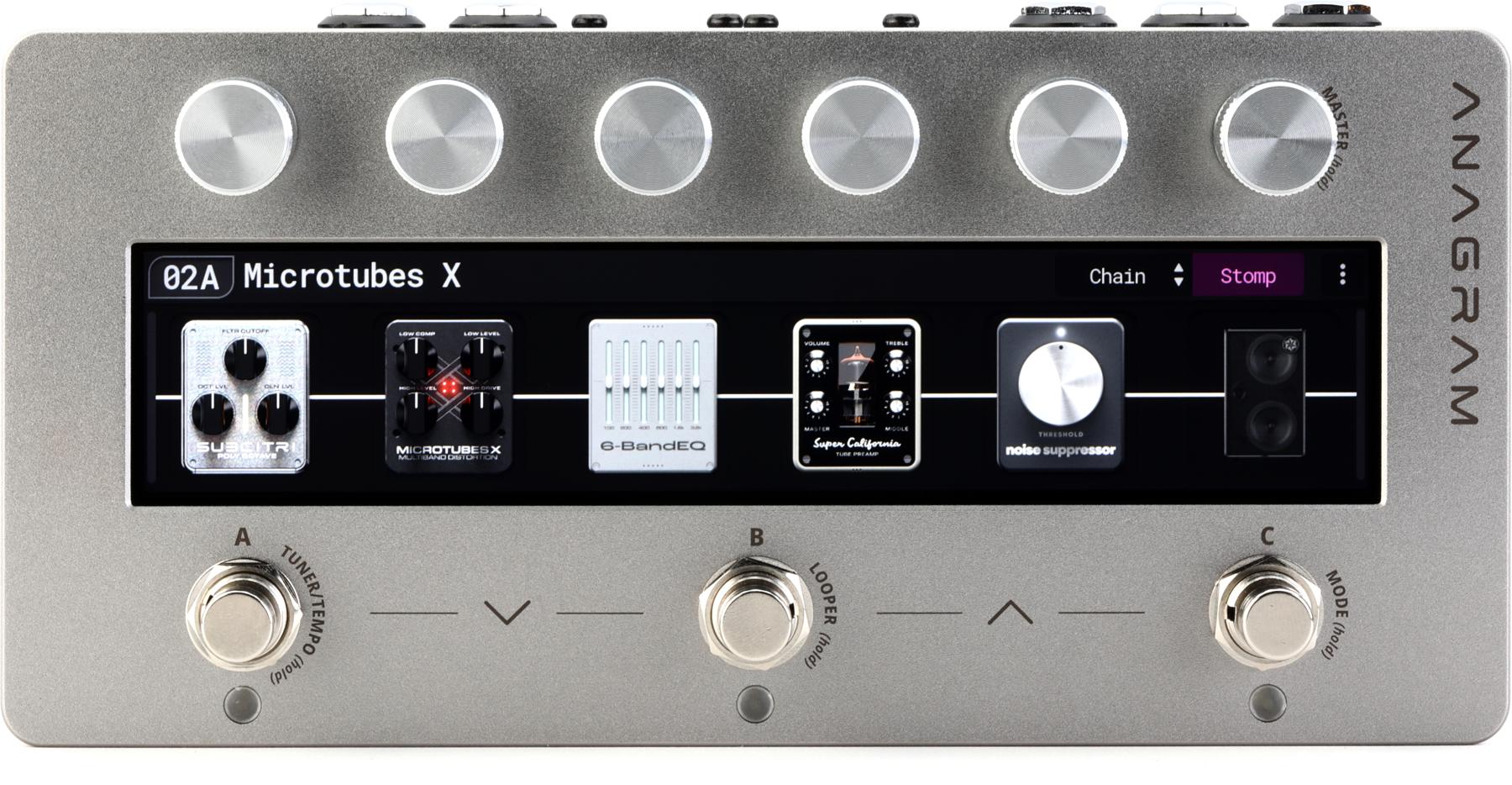Playing through a 100-watt head is immensely satisfying, regardless of your style. If you want dirty, and there’s a gain control, you’ve got dirty. If you want clean, the headroom hits the sky. Whether you’re purveying rock ’n’ roll filth, snarling blues, old-school roots, or avant-skronk, it’s all there—especially if you use pedals for low-gain drive and color.
In the case of Orange’s new Baby series entries, these possibilities exist in triplicate: the compact, highly controllable Gain Baby 100, Tour Baby 100, and Dual Baby 100 amps. These grab-and-go solid-state units with strong metal chassis are a mere 6 1/2 pounds, come with a durable shoulder bag for transport, and can be dropped atop a cabinet or into a rack. (These amps measure 12.8" x 3.13" x 7.68".) Each model has two radically different channels, guaranteeing versatility, plus a class A/B power stage for clarity and heavy lifting. They all offer the fat, midrange growl and the fast touch-sensitivity I associate with the classic, Orange sounds of players ranging from Peter Green to Slipknot’s Jim Root, which is perhaps a result of their single-ended JFET preamp stage.
I tested these Babies with a vintage Les Paul, a PRS Silver Sky SE, and a Zuzu custom with coil-splitting, to get a wide variety of tones. I also switched between a 1x12 cabinet with a G 12M Greenback and another with a 50-watt Eminence Red Coat Private Jack. Both cabs were 8 ohms, but the amps can also run 70 watts into 16 ohms. While the Celestion drilled down on nasty, Hendrix- and early ’70s-era voicings, the 50-watter really let the amps breathe in lush harmonic detail.
Each of the triplets has a footswitch option for channel and volume switching, an effects loop, and a balanced XLR out, and can be easily used with a DAW, cab sims, and IR captures. These units can also be switched for 100, 110, and 220 volts AC. Short take: I found a lot to like about these sonic siblings.
Gain Baby 100
While I’m not typically a high-gain player, I took to the Gain Baby 100 immediately, enjoying the edgy tone, responsiveness, sustain, and articulation in its dirty channel. Dirty offers gain, volume, presence, and 3-band EQ, plus the footswitchable volume has its own level control, and it delivers a stinging rock voice where chords hang and bloom. This channel’s real “dirty” secret is a toggle that can be flipped to “tight” mode, which functions like an additional EQ stage that polishes lows and focuses the mids, making them really singing and dimensional.
I initially viewed the clean channel on the Gain Baby and Tour Baby as pedal platforms, with just a volume control and bass and treble, but the clean side’s built-in, single-knob compressor pushes the Gain Baby’s volume and low-end character to the fore, conjuring memories of that ’70s uber-beast, the Sunn Beta Lead (and the Melvins’ King Buzzo). Ultimately, the Gain Baby 100 delivers very distinct and appealing bookends of heavy for just under 600 bucks.
Key: Dirty channel rhythm > dirty channel rhythm with tight switch engaged > dirty channel lead > dirty channel with tight switch lead > clean channel rhythm > clean channel lead
Tour Baby 100
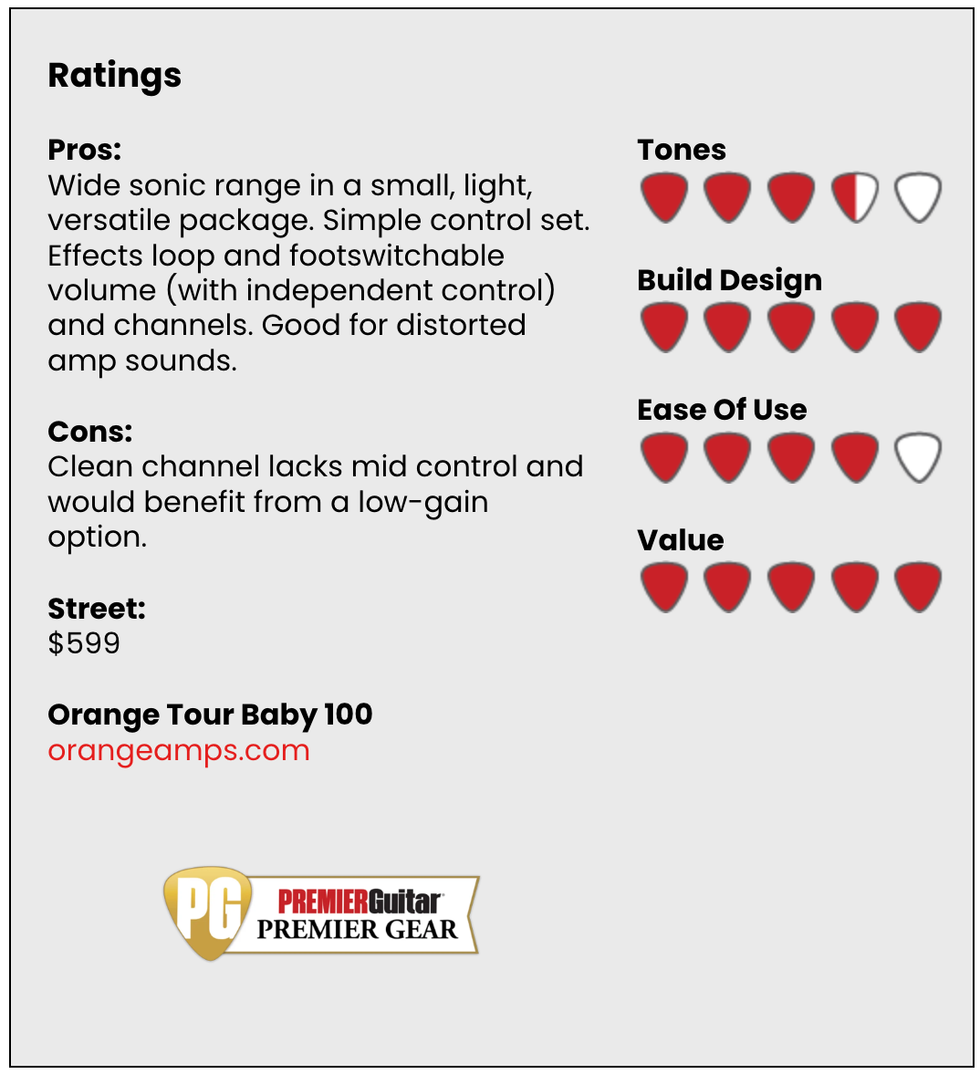
The road-oriented Tour Baby seems the most versatile of the trio. The dirty channel has the same control panel as the dirty side of the Gain Baby, minus the tight switch. And while overall the amp seems to have a bit less gain, it’s still easy to get into Wayne Kramer territory by cranking up the gain control when you want to kick out the jams. Sweet, sustained tones were a snap to achieve by dialing back the guitar’s tone pots, riding the amp’s mid control high, setting treble to about 7 or 8, and dialing in the bass at 3.5 to 4. And, again, like the Gain Baby, the 3-band EQ offers plenty of range. If even more crunch is desired, the presence knob helps dial it in.
The Tour Baby’s clean channel also mimics the Gain Baby’s clean setup, but the compressor doesn’t lean into the low end like it does on the Gain Baby. It does, however, sculpt and define tones in a very appealing way, warming and pushing midrange. While I preferred the dirty channel here, my colleague Tom Butwin fell for the clean side, and his excellent demo video online is well worth watching. For me, this amp’s strength is that it stands on its legs and growls from the dirty side, and provides a characterful pedal platform on the clean side. All three amps, by the way, sound terrific with a reverb pedal, though less so at higher-gain settings.
Dual Baby
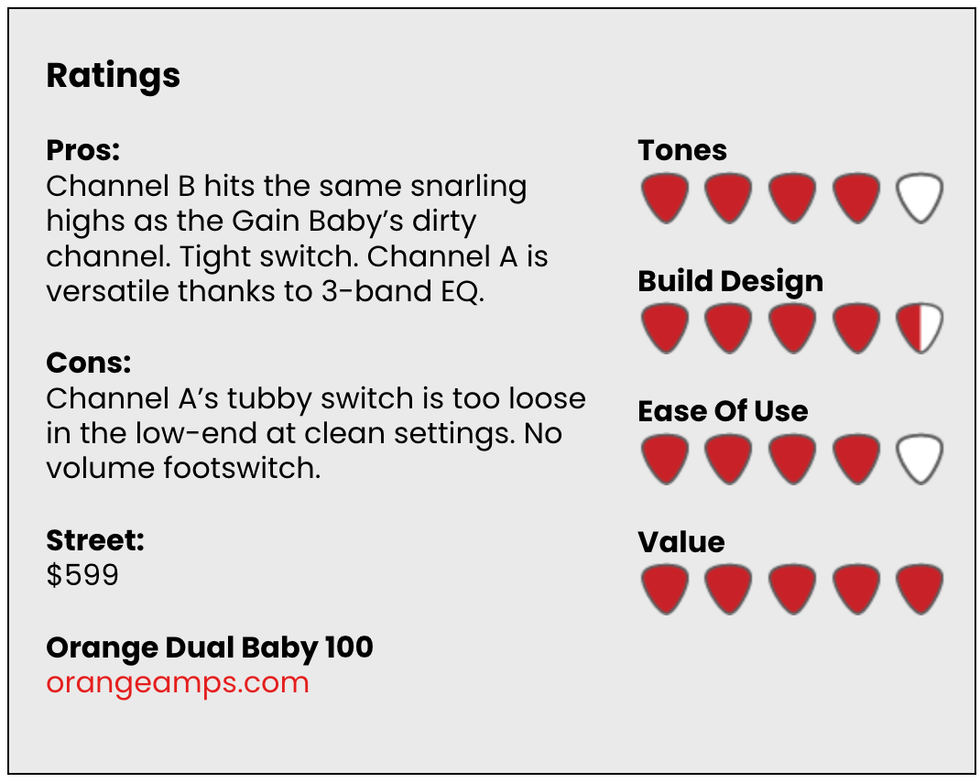
For players devoted to traditional British voicings, the Dual Baby may be the most enticing option, providing at least two recognizably classic sounds in one small, efficient package. Channel A is based on the company’s Rockerverb series, minus the reverb, and both A and B channels on the Dual Baby have 3-band EQ. The B side has the same setup and tonal characteristics as the dirty channel of the Tour Baby, sans the footswitchable volume, so you can’t pump up the level for solos with a quick stomp. However, it does have a “tight” toggle, so it’s easy to get into the same spanking, airy terrain as the Gain Baby’s dirty side or play it relatively clean.
But the A channel has another asset: a “tubby” switch, which is new for Orange. With gain pushing toward 7 and presence at about midway, and the treble rolled back, the tubby setting’s low-end boost evokes Black Sabbath—dark and ominous and perfect for sustained power chords. If your tastes run toward nasty, there’s a lot to like with the Dual Baby.
Key:
Channel A rhythm > channel A lead > channel A rhythm tubby > channel A lead tubby >
Channel B rhythm > channel B lead > channel B rhythm tight > channel B lead tight
The Verdict
Orange’s three versatile Babies cover a lot of ground in small, very affordable, well-built packages. Their response and rich-hued sounds–available even at low volumes–never left me pining for tubes, and their 100-watts make them useful for any stage. For travel, studio, or at-home playing, they are well worth investigating. These Babies can unquestionably run with the big boys. PG









